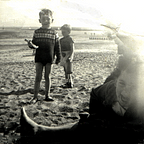Strange Death of President Garfield
The 20th US president survived an assassination attempt — until doctors got involved.
July 2, 1881, 9.30. a.m
Four months after taking office, President James A Garfield enters the Baltimore and Potomac Railroad Station in Washington, DC. He is about to leave the steaming hot capital to spend the summer at his family home in New Jersey. By his side is Secretary of State, James G. Blaine
The two most senior public figures in the US are deep in conversation on the concourse. Despite the Lincoln assassination twenty years earlier, American politicians still travel in public areas without personal security. They do not notice a man hovering by the ladies waiting room.
This is Charles J. Guiteau. He has a bizarre plan to ‘remove’ the President and become the US Consul in Paris. Guiteau has bought a British Bulldog revolver specially for the occasion. He has no previous firearms experience but is shooting from point-blank range.
Garfield, a former Civil War general, raises his arms, “My God, what is that?” he cries
Guiteau fires again. Garfield collapses. One bullet has grazed the President’s shoulder. The other strikes him in the back, missing the spinal cord before coming to rest behind his pancreas.
Aides scoop up the President, who is conscious but in shock. They carry him to an upper floor of the railway station. Doctors apply first aid and supervise his transportation back to the White House.
As news breaks, the President’s personal physician rushes to his bedside. He soon joined by other eminent doctors. The prognosis is not good, “Prepare for the worst,” they tell aides. “He won’t survive the night.”
This proves overly pessimistic. President Garfield makes it until the morning and his vital signs improve. The 20th US president is clearly not out of the woods yet but there now appears to be a realistic prospect of a recovery. A long vigil begins.
For the next seventy-nine days, the most distinguished medical practitioners in America set about extracting the bullet still lodged in the president’s back. Convinced that this bullet is the primary danger, they probe the wound with bare fingers but cannot pinpoint its precise location.
Wilder approaches are suggested. One is to hold the president upside down while two strong men squeeze out the bullet. That is seriously discuss but regretfully rejected. The doctors continue to prod and poke.
The intense summer heat is another concern so naval engineers improvise an air cooler system. Fans blow over a large box of ice, releasing air into the President’s sickroom. This prototype air conditioning technology helps but cannot prevent further enervation of weakened president.
Still the doctors search for that magic bullet. Alexander Graham Bell even invents a metal detector for the task. Unfortunately the president’s chief doctor is suspicious of this new fangled machine. He insists that Bell’s contraption be only used on one side of the body.
The wrong side as the autopsy would reveal. The only metal detected comes from Garfield’s sick bed.
Throughout that long summer, there are hopeful newspaper updates indicating signs of progress, only to be quickly followed by setbacks. The trajectory is downwards as each new infection weakens his condition. Optimism fades as the president’s condition worsens.
In September President Garfield is moved to his family home on the Jersey Shore. On the 19th he dies, two months before his fiftieth birthday.
What went wrong?
Modern medical thinking blames the failure to control secondary infection. Doctors searching for the missing bullet, probed Garfield’s wound with dirty, unsterilised fingers and instruments, wearing bloodied surgical gowns over street clothes. As John Dickerson puts it in Whistlestop:
“the poking and the prodding by the — ‘doctors and experts’..probably ended up killing Garfield by introducing all kinds of infections. Just as he was getting better they’d come in with a new cure and make him sicker…”
Lister’s ‘antiseptic principle’ was already becoming established in Europe. This assumed that the germs that caused septicemia and post-operative infections were not visible to the human eye. Working in a London hospital, Lister demonstrated that an aseptic approach to surgery could significantly reduce the mortality rate for those ‘under the knife’.
Meanwhile, Garfield’s eminent doctors remained loyal to the conventional wisdom of the US medical establishment. This dismissed Lister’s innovations, as ‘unscientific quackery’. In the words of the editor of Medical Record:
We are likely to be… much ridiculed in the next century for our blind belief in the power of unseen germs
Wrong call. Clean hands trumped the fanciest medical technology and the most skilful surgeons when it came to surviving the operating table. They still do.
